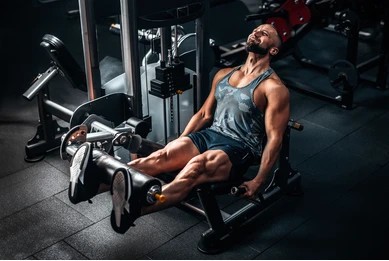What Is the Perfect Size for a Woman? Beauty and Health Insights

The question of what is the perfect size for a woman has sparked endless debates influenced by culture, society, and media. While standards have evolved over time, it’s essential to recognize that beauty and health are highly individual. This article explores ideal body measurements for women, healthy body weight, and modern beauty standards to provide a comprehensive understanding of the topic.
The Evolving Concept of Beauty and Size
Throughout history, cultural standards of beauty have constantly shifted, reflecting societal values and media influence. In one era, slim vs. curvy body types have dominated, while in others, an hourglass figure was idealized. These changes highlight the subjective nature of beauty and the importance of embracing individuality.
Ideal Body Measurements for Women
There is no universal formula for proportional body measurements, but cultural influences often play a role. Commonly cited ratios, such as the waist-to-hip ratio, emphasize symmetry and balance over fixed dimensions.
Understanding Body Size Preferences
Personal preferences for body size vary greatly and are often influenced by cultural norms, personal upbringing, and societal trends. These preferences demonstrate how diverse and unique the perception of beauty is across regions and time periods.
Defining a Healthy Body Weight for Women
Health professionals often refer to BMI for women to determine whether a weight range is healthy for an individual’s height. However, fitness goals for women should also account for muscle mass, bone density, and overall well-being.
The Reality of the Average Dress Size for Women
In many countries, the average dress size for women ranges from 12 to 16. However, this number varies based on age, ethnicity, and lifestyle. It’s crucial to understand that dress size doesn’t define beauty or health.
Exploring Perfect Figure Statistics
Research has shown that societal views on the “perfect figure” often align with cultural ideals rather than practical health metrics. For example, the hourglass figure measurements remain iconic in many contexts but aren’t universally attainable.
Promoting Body Positivity and Size Acceptance
The rise of body positivity and size movements has shifted focus toward embracing diversity and challenging stereotypes. Celebrating all body types promotes confidence and self-worth in women everywhere.
Impact of Fashion Industry Size Standards
The fashion industry historically perpetuated narrow ideals, but recent changes highlight inclusivity with plus-size models and diverse representation. These changes are crucial for breaking harmful stereotypes about women’s size.
Women’s Body Shape Preferences in Society
Preferences for body shapes like pear, athletic, or apple vary widely. Recognizing this diversity challenges the notion of a single “ideal” body shape for all women.
Slim vs. Curvy Body Types: Breaking the Binary
Labels like “slim” or “curvy” fail to capture the diversity of women’s bodies. Both body types can be equally celebrated.
The Importance of Height and Weight Ratio for Women
Height and weight are interconnected, with the height and weight ratio for women often guiding health recommendations. This promotes a well-rounded strategy for maintaining physical health.
Setting Realistic Fitness Goals for Women
Focusing on achievable, individualized fitness goals for women is vital for promoting sustainable health improvements without succumbing to unrealistic standards.
The Timeless Appeal of Hourglass Figure Measurements
The hourglass figure measurements (e.g., 36-24-36 inches) have long been idealized but represent only one of many beautiful body types.
Shifting Modern Beauty Standards
Today’s modern beauty standards encourage inclusivity and challenge outdated perceptions, making room for diverse shapes, sizes, and ethnicities in the narrative of beauty.
The Science Behind the Waist-to-Hip Ratio
Research connects the waist-to-hip ratio with perceptions of both health and physical attractiveness. Ratios closer to 0.7 are often deemed appealing but shouldn’t define worth.
Building Confidence Through Body Confidence Tips
Confidence is key to radiating beauty. Simple body confidence tips include focusing on self-care, dressing comfortably, and embracing positive affirmations.
Exploring Plus-Size Fashion Trends
The rise of plus-size fashion trends demonstrates growing acceptance and representation of larger body types within the global beauty conversation.
Addressing Stereotypes About Women’s Size
Combating stereotypes about women’s size requires education, open dialogue, and challenging the narrow narratives often perpetuated by media and advertising.
Read Also: Hyperflexion: Understanding Causes, Risks, and Treatments
Conclusion
There is no single answer to what is the perfect size for a woman, as beauty is subjective and deeply personal. Embracing body positivity and size, understanding healthy body weight for women, and celebrating diversity are essential steps forward. Let’s redefine perfection as confidence, health, and self-love.
FAQs
1. What is the ideal waist-to-hip ratio for women?
The ideal waist-to-hip ratio is often considered 0.7, but this varies based on individual preferences and health factors.
2. How does BMI define healthy body weight?
BMI for women provides a general guideline by calculating weight relative to height but doesn’t account for muscle mass or bone density.
3. Why does dress size vary across brands?
Fashion industry size standards lack universal consistency, leading to differences in sizing between brands and countries.
4. Can curvy and slim body types both be ideal?
Absolutely! Slim vs. curvy body types are equally valid and beautiful, reflecting the diversity of women’s natural forms.
5. What are the benefits of body positivity?
Body positivity and size advocacy promote mental health, self-acceptance, and a healthier perspective on beauty and body image.






